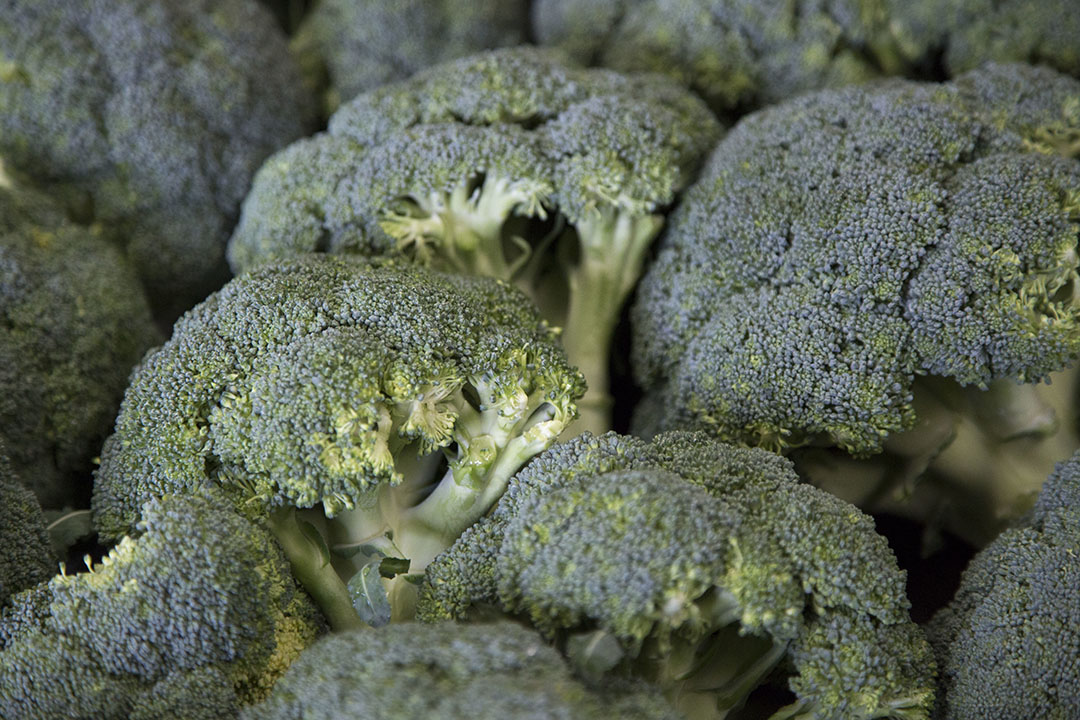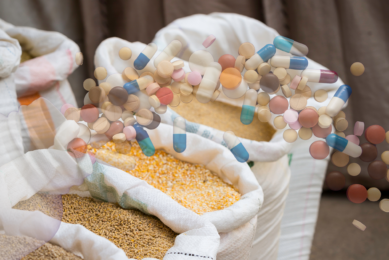Benefits of broccoli for broilers

The feed industry is constantly seeking sustainable alternatives to antibiotics. Broccoli residues have valuable antimicrobial and antioxidant properties that make them an attractive alternative.
In addition, fermentation enriches the value of broccoli thanks to increased amounts of acetate, yeast, lactic acid bacteria and Bacillus subtilis. It is of interest to know the extent of which broccoli improves growth performance and meat quality, while curbing the effects of harmful pathogens. As a result of the high standards demanded by both consumers and retailers, the processing of broccoli results in losses of about 45 to 50%. The main reasons cited are irregular shape, small size, and handling damage during harvesting or due to pests. About 20 to 25% additional losses occur in the field, generating large quantities of florets, stems, and leaves as crop residues.
The disposal of such large quantities of broccoli residues represents huge economic losses for vegetable growers and poses major environmental concerns due to air pollution and water eutrophication. Broccoli florets are usually eaten cooked. However, the discarded, potentially nutritious stems and leaves of broccoli often go to landfills as by-products after harvesting and processing of the florets. Incorporation of broccoli residues in animal feed leads to a more sustainable feed base and reduces potential harm to our environment.
Broccoli stems enhance eggs and poultry meat
Studies in layer hens have shown that broccoli stems and leaves can enhance the nutrients in eggs and deepen the colour of yolks. Similarly, in broilers, researchers at a number of universities (McGill University, 2016; Henan University of Science and Technology, 2018; and Chinese Academy of Agricultural Sciences, 2018) have examined the beneficial antimicrobial and antioxidant effects of broccoli residues. The researchers focused on the effects of fermented or unfermented broccoli residues on growth performance, meat quality (oxidative status) and the capacity to reduce bacterial loads.

Antibiotic Reduction: Moving away from antibiotics can be challenging and requires a new way of thinking. This special edition explores the latest methods for raising healthy livestock without the use of preventive antibiotics.
Broccoli nutrient composition and properties
Broccoli is a nutritious vegetable that is rich in dietary fibres, vitamins and minerals, bioactive phytochemicals (glucosinolates, phenolic compounds, and flavonoids), the consumption of which is beneficial for the prevention of chronic disorders such as carcinogenic and cardiovascular pathologies (Mustafa and Baurhoo, 2016). Most of these active components have strong antioxidant activities (Horbowicz, 2003). In addition, broccoli stems and leaves contain specific carotenoids that have antiallergic, anti-cancer and anti-obesity bioactivity (Pedroza et al., 2015). Broccoli also has a relatively high protein content compared to most grains. This protein is found in the florets, ranging from approximately 20% to 40% and the fibre content in the stalks is high. The most abundant amino acids are tyrosine, aspartic acid, glutamic acid, proline and valine.
Antimicrobial effects
Studies show that the populations of Campylobacter, E. coli, and Gram– (gram negative bacteria) in the caecal digesta and on the neck skin of broilers were decreased by fermented broccoli at 5% or 10% inclusion rates (see Table 1). The reduction in Salmonella and C. perfringens in caecal digesta was more pronounced at 10%. It was suggested that the significant reduction in potentially harmful bacterial loads may be caused by the organic acids, probiotics, flavonoids, and vitamins in fermented broccoli. This is also observed in broilers where supplementation of organic acids or probiotics leads to a reduction of intestinal Salmonella, E. coli, and Campylobacter (Bourassa et al., 2018, Emami et al., 2017 & Guyard-Nicodeme et al., 2017).
Antioxidant effects
Broccoli stem and leaf meal included at 4%, 8% and 12% showed improved meat quality through more skin pigmentation and a reduced drip loss percentage of breast meat – drip loss decreased with an increase in the inclusion rate. The more skin pigmentation was mainly related to the high amounts of xanthophylls in broccoli, while the decreased meat drip loss is attributed to the antioxidative function of broccoli. Broccoli stem and leaf meal improved total antioxidant capability by lowering malondialdehyde concentration and increasing the activities of superoxide dismutase and catalase of breast muscle. Similarly, fermented broccoli added at 5% or 10% increased the activities of superoxide dismutase, glutathione peroxidase, catalase and the total antioxidant capacity, in the pectoralis major muscles. In the gastrocnemius muscle, both levels of fermented broccoli increased the activities of superoxide dismutase, glutathione peroxidase and total antioxidant capacity, but did not affect catalase. However, in both muscle types, including 10% led to greater effects on superoxide dismutase activity. The higher activities of antioxidative parameters in fermented broccoli treatments may be attributed to probiotics, organic acids, and the presence of other bioactive components.
Growth performance and nutrient digestibility
Mustafa and Baurhoo (2016) reported that dried broccoli floret residues incorporated at 3% and 6% improves the growth and FCR of broilers, but at high levels (i.e., 9%), ileal and total tract nutrient digestibility might be compromised. The results of Liu et al. (2018) showed an improvement in the growth performance of birds challenged with C. perfringens and fed broccoli residues fermented with probiotics (see Table 2). Bioconversion of dried broccoli floret residues in broiler diets may help to reduce feed costs and alleviate the environmental concerns related to the disposal of huge quantities of vegetable residues. Proper inclusion levels must be established to avoid possible suppression of nutrient digestibility, which might occur at high levels. Due to its antibacterial, antioxidant and probiotic properties, dietary fermented broccoli might well be a potential alternative to the use of antibiotics in animal feed.











